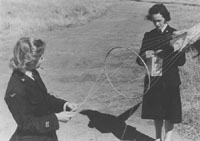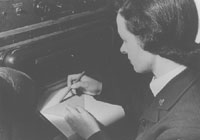


War History of the Australian Meteorological Service
Foreword
Preface
Introduction
Chapter 1: D.Met.S.—Australia's Wartime Weather Service
Chapter 2: The Weather Factor in Warfare
Chapter 3: Met in the Retreat
Chapter 4: Met in the Advance
Chapter 5: Meteorology in Aviation
Chapter 6: Central Forecasting Services
Chapter 7: Met With the Army
Chapter 8: Research and Personnel Training
Radiosonde Personnel
Chemical Warfare Experiments
Training of Outside Personnel
Miscellaneous Training and Lectures
Civil Air Lines' Trainees
Compilation of Notes and Manuals
Meteorological and Climatic Reports
Coastal and Seaward Areas
Enemy Occupied Areas
Training Statistics
Chapter 9: Instrumental Development and Maintenance
Chapter 10: Scientific Developments in the RAAF Meteorological Service
Chapter 11: Divisional Bureaux and Their Work
Appendix 1: List of Reports Provided by D.Met.S. for Advances Operational Planning and Other Purposes
Appendix 2: List of Service Personnel RAAF Meteorological Service
Appendix 3: List of Civilian Personnel Who Worked Together with Service Personnel of the RAAF Meteorological Service
Appendix 4: List of Locations at which RAAF Meteorological Service Personnel Served
Index
Search
Help
Contact us

Radiosonde Personnel
An additional demand for skilled personnel came with the proposed establishment of a radiosonde (upper air sounding) network in Australia. Not only were special operators required for the various stations at which the device was to be installed, but it was necessary also that meteorological officers at these places should be familiar with the general routine work associated with radiosonde flights.In June 1942 the eight successful trainees on Meteorological Officers' Course No 4 were given training in radiosonde operation, and during the latter half of 1943 a number of additional personnel—comprising four new meteorological assistants from each of Courses 10, 11 and 12, together with four charters from Course 16 and two from Course 17—also were instructed. The charters, incidentally, subsequently formed the nucleus of staff operating radiosondes in the field, since it had by that time been decided to allot this work to meteorological charters. Later, selected airmen were trained on the station during actual performance of the upper air sounding flights.
The first RAAF radiosonde station in Australia was established experimentally at the D.Met.S. headquarters in Melbourne, where the operators were four WAAAF meteorological assistants from the staff of the research and training section and ascents were made each morning about 3 o'clock. Later the radiosonde installation was transferred to Laverton, which became the first operational station.


Chemical Warfare Experiments
Allotment of trained weather personnel to the Army Chemical Warfare Experimental Section commenced in the latter part of 1942 when one meteorological officer was made available. About six months later, a meteorological assistant was added to this staff, which was carrying out experimental work at the University of Melbourne and at Innisfail, while during 1944 about 12 charters were released to the section after they had been trained in the special work involved in their new appointments.
Organisations in Australian Science at Work - Directorate of Meteorological Services (D.Met.S)
 |
Bureau of Meteorology |  |
© Online Edition Australian Science and Technology Heritage Centre and Bureau of Meteorology 2001
Published by Australian Science and Technology Heritage Centre, using the Web Academic Resource Publisher
http://www.austehc.unimelb.edu.au/fam/0695.html